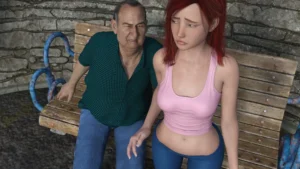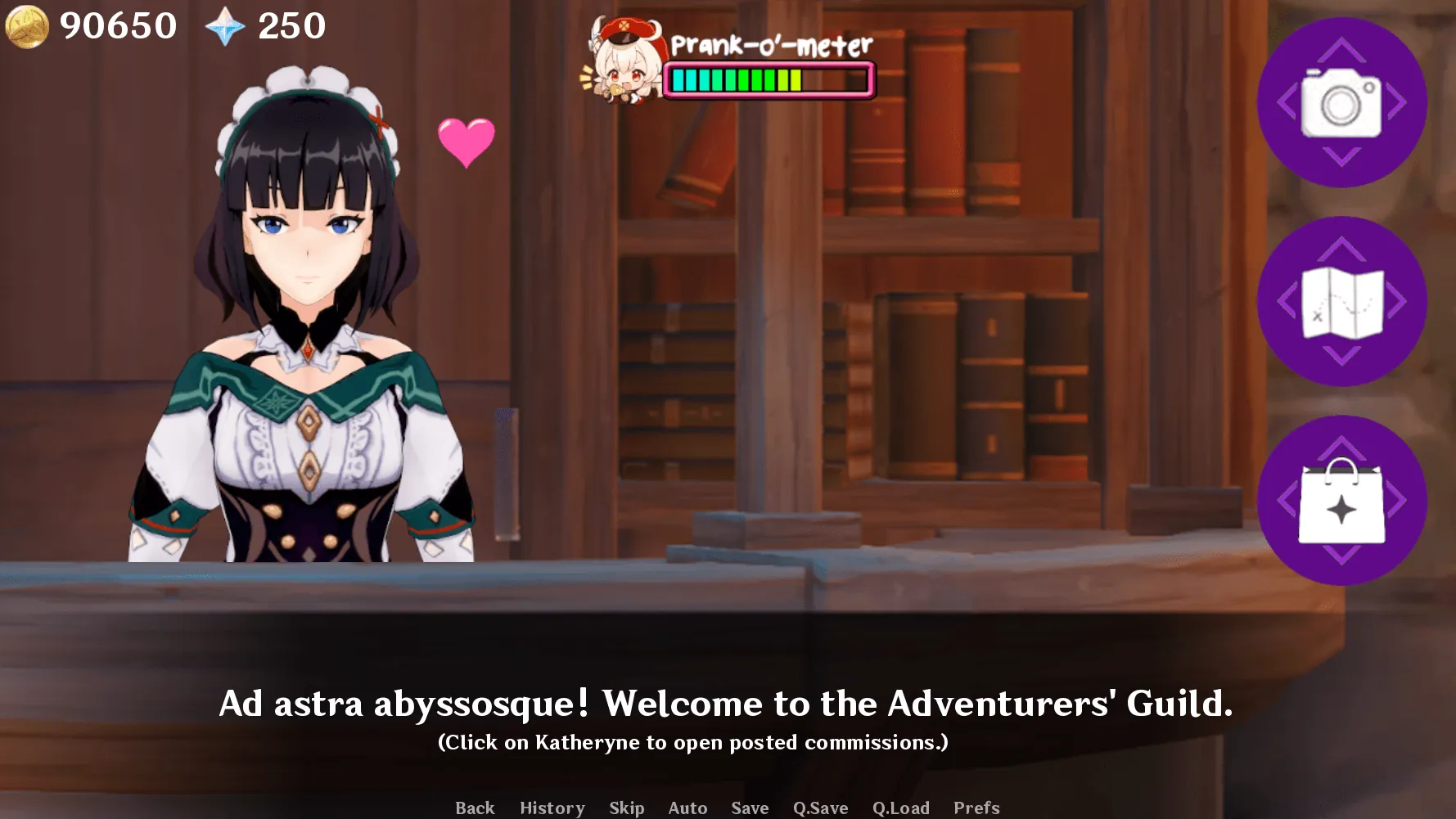
The Theater of Sinners
Play The Theater of Sinners
The Theater of Sinners review
Explore the dark, choice-driven narrative of The Theater of Sinners and discover what makes this visual novel stand out
Step into the morally ambiguous world of The Theater of Sinners, a visual novel that challenges players to navigate a web of complex relationships, personal struggles, and life-altering decisions. Set in a society where the line between right and wrong is constantly blurred, this game immerses you in the lives of deeply flawed yet compelling characters. Your choices shape their personalities, relationships, and ultimate fates—leading to redemption or ruin. Whether you’re drawn to intricate storytelling, character development, or the thrill of interactive decision-making, The Theater of Sinners offers a gripping, thought-provoking experience that stays with you long after the credits roll.
Unraveling the Story and Themes of The Theater of Sinners
A World of Moral Ambiguity and Personal Struggle
Let me tell you about the first time I realized The Theater of Sinners story wasn’t playing by the usual rules. I made a choice I thought was clearly “good,” only to watch it spiral into a heartbreaking consequence for another character. I sat there, staring at the screen, genuinely stunned. 😮 That’s the power of this game’s moral ambiguity in games. It refuses to give you easy answers or paint its world in simple blacks and whites. Instead, you’re navigating a landscape of grays, where every decision feels like walking a tightrope over your own conscience.
This isn’t a fairy tale; it’s a gritty, emotional drama that pulls no punches. The dark visual novel themes here are not for shock value—they’re the foundation of a world where corruption is systemic and personal transformation is often painful. You’ll explore concepts of guilt, redemption, and the heavy cost of survival. The game asks you: what are you willing to do, and who are you willing to become, when all your options are flawed? 🤔 It’s this relentless push into uncomfortable territory that makes the interactive storytelling so compelling and memorable.
Meet the Characters: Complex Lives, Difficult Choices
At the heart of this riveting narrative are the Paula and Rebeca characters, two young women whose lives become tragically intertwined. Getting to know them is like slowly peeling an onion—each layer reveals more complexity and brings a few tears. 😢
Paula is the daughter of a powerful, influential figure, living a life that seems privileged from the outside. But that privilege is a gilded cage. I remember a specific scene where her frustration with this controlled existence was so palpable, I felt it in my own gut. Her journey begins when she becomes entangled with a group of delinquents, not out of rebellion for its own sake, but from a deep, aching need to find something real. Her story is a powerful exploration of how the search for identity can lead you down paths you never imagined.
Then there’s Rebeca. 🎭 Her life has been shaped by a troubled and painful upbringing, forging her into a survivor who trusts no one and relies only on herself. Where Paula is searching for meaning outside her cage, Rebeca is building walls to protect the fragile person inside. The writing for Rebeca is so nuanced; you understand her harsh exterior isn’t who she is, but what she’s been forced to become. Watching these two contrasting souls collide is one of the greatest strengths of the game’s character-driven narrative.
They are supported by a cast that feels just as real and fully realized. From the delinquents with hidden depths to the authority figures with questionable motives, every character has a history that informs their actions. You don’t just meet plot devices; you meet people.
| Character | Core Motivation | Central Story Arc |
|---|---|---|
| Paula | To escape the suffocating control of her upbringing and find authentic connection. | Transformation from a sheltered daughter to an active participant in her own destiny, learning the harsh realities of the world beyond her privilege. |
| Rebeca | To survive and protect herself from further emotional and physical harm. | A gradual, difficult journey toward lowering her defenses and understanding that vulnerability is not always a weakness. |
| Leo (Delinquent Leader) | To provide a sense of family and belonging for his group, by any means necessary. | Struggling to balance his hardened exterior with the responsibility he feels for those who depend on him. |
| Mr. Alvaro (Paula’s Father) | To maintain control and a public image of success, at any cost. | Confronting the consequences of his controlling nature and the damage it has inflicted on his relationship with his daughter. |
How Player Decisions Shape the Narrative
This is where The Theater of Sinners truly separates itself from more passive experiences. The player choices impact story in a way that is both profound and deeply personal. This isn’t about picking a “good” or “evil” dialogue option at a key moment. It’s about a hundred smaller decisions that collectively build your unique version of the story. 🧩
Pro Tip: Don’t try to “game” the system on your first playthrough. Go with your gut. The most authentic and often most impactful story is the one you create when you’re not trying to metagame a perfect ending.
I learned this the hard way. Early on, I had a choice to either defend a character from an accusation or remain silent to avoid drawing attention to myself. I chose self-preservation. Several chapters later, that character, now broken by the fallout of that incident, made a decision that closed off an entire branch of the story for me. The game didn’t flash a “WRONG CHOICE” sign; it simply let the consequence of my inaction unfold naturally. That moment of realization was a masterclass in interactive storytelling. 😲
The player choices impact story on multiple levels:
* Relationship Dynamics: Your decisions directly affect how Paula, Rebeca, and others perceive and interact with you. A kind word can build a bridge, while a harsh truth can burn it down forever.
* Story Branches: The narrative doesn’t just have one ending; it has multiple, significantly different pathways. You might unlock scenes and revelations that other players completely miss.
* Character Revelation: Sometimes, your choices determine what you learn about a character’s past or motivations, fundamentally changing how you view them and the entire The Theater of Sinners story.
This system creates a powerful character-driven narrative because the characters remember your actions. They react, they hold grudges, they express gratitude. It makes them feel less like programmed NPCs and more like people you have a real, evolving relationship with. The moral ambiguity in games is heightened because you’re not just judging the characters—you’re being forced to judge your own decisions under pressure. 🎯
Ultimately, exploring The Theater of Sinners story is like being the lead actor and playwright in your own dark, poignant drama. The journey of the Paula and Rebeca characters will stick with you long after you’ve put the controller down, precisely because you were an active participant in shaping their fates. It’s a challenging, emotional, and unforgettable demonstration of how powerful interactive storytelling can be when it’s placed in the hands of the player. ✨
The Theater of Sinners is more than just a game—it’s a journey into the complexities of human nature, where every choice carries weight and every character’s fate hangs in the balance. Its rich storytelling, deep character development, and impactful decision-making set it apart in the world of visual novels. While the mature themes and emotional intensity may not be for everyone, those who appreciate thought-provoking narratives and interactive experiences will find much to explore. If you’re ready to confront moral ambiguity and shape the lives of unforgettable characters, dive into The Theater of Sinners and discover where your choices will lead.





















